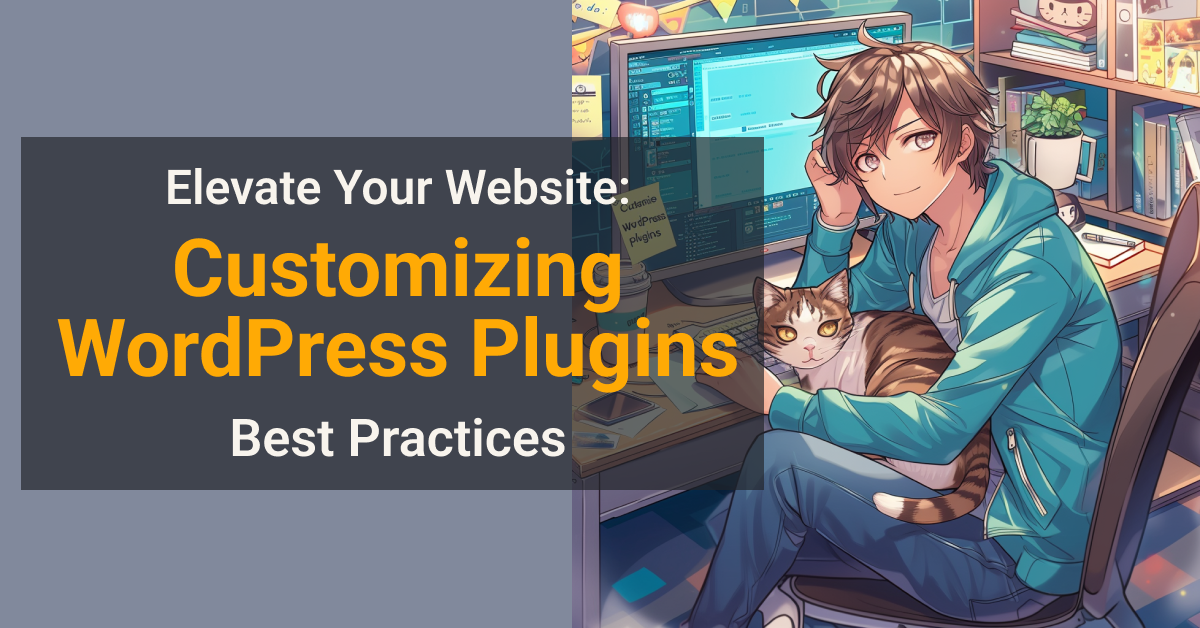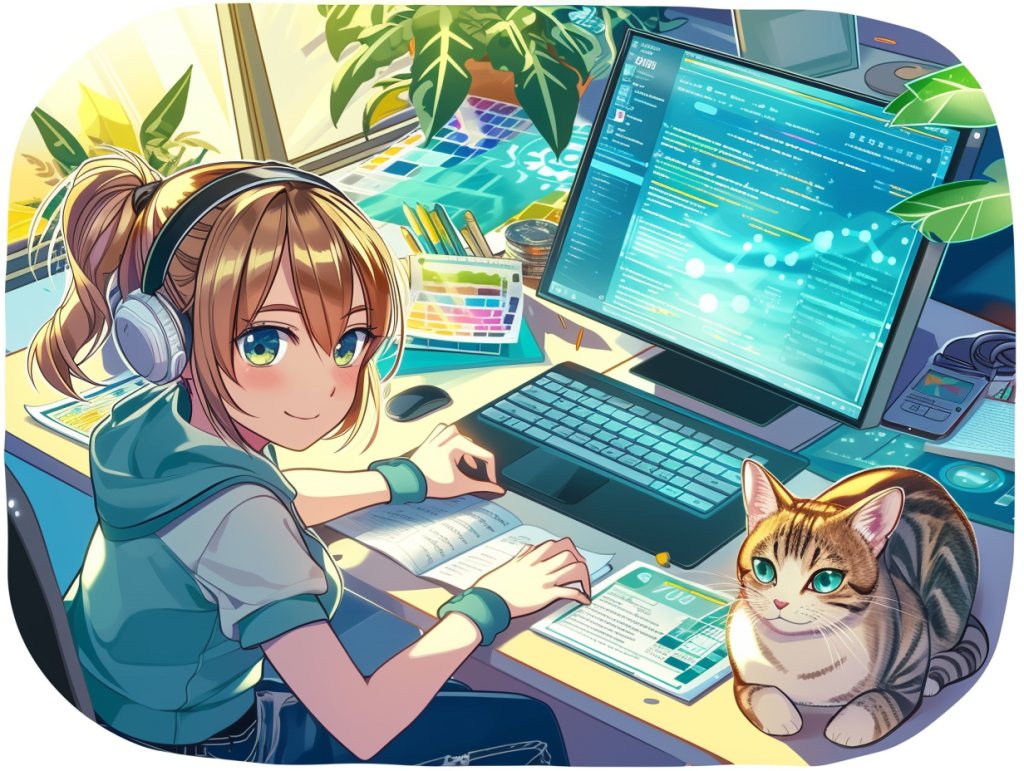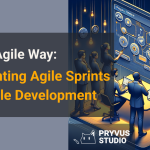Notice: Only variables should be passed by reference in /home/ploi/pryvus.com/public/wp-content/themes/pryvus/template-parts/content-post.php on line 12

Introduction: The Art of WordPress Plugin Customization
Customizing WordPress plugins is a craft that can significantly elevate your website’s functionality and user experience. Whether you’re fine-tuning existing plugins or venturing into the development of bespoke solutions, mastering the art of plugin customization is essential for any WordPress site owner looking to stand out. In this guide, we’ll explore the best practices for customizing WordPress plugins, ensuring your enhancements are both powerful and seamless.
From understanding the intricate architecture of plugins to ensuring your customizations are safe and update-proof, we’ll walk you through the key steps to transform your WordPress site. With Pryvus Studio’s insights, you’ll learn how to optimize plugin performance, develop custom plugins with confidence, and maintain your creations for long-term success. Let’s dive into the world of WordPress plugin customization, where creativity meets functionality.
Understanding WordPress Plugin Architecture
Before diving into customization, it’s essential to grasp the architecture of WordPress plugins. This understanding is key to effectively modifying and enhancing plugins without compromising the functionality of your WordPress site.

“A solid grasp of plugin architecture lays the groundwork for successful customization.”
WordPress plugins are written in PHP, the scripting language WordPress is built on, and they interact with the WordPress core to extend its functionality. Key aspects of plugin architecture include:
- Hook System: WordPress plugins operate using actions and filters, collectively known as hooks. These hooks allow plugins to interact with the WordPress core at specific points without altering the core files.
- PHP Functions: Plugins typically contain a series of PHP functions tied to specific hooks. Understanding these functions is crucial for customizing how the plugin behaves.
- Database Interactions: Many plugins store or retrieve data from the WordPress database. Knowing how this interaction works is vital for both developing and customizing plugins.
- File Structure: Plugins may include PHP files, JavaScript, and CSS. Familiarity with this file structure is important for both creating new plugins and customizing existing ones.
Understanding these components of WordPress plugin architecture is the first step toward effective customization. It enables you to modify plugins in a way that is cohesive with WordPress’s core functionality, ensuring stability and performance of your website.
Best Practices for Safe Plugin Customization
Customizing WordPress plugins requires a careful approach to maintain your site’s security and performance. Following best practices ensures that your customizations are safe, effective, and update-proof.

“Safe customization practices protect your site while extending plugin functionality.”
Here are essential best practices for WordPress plugin customization:
- Use Child Themes: For customizations that involve theme-specific plugins or functionalities, always use a child theme. This approach prevents your customizations from being overwritten during theme updates.
- Understand Hooks: Leverage WordPress’s hooks system to add or modify functionality without editing the plugin’s core files directly, preserving your changes across updates.
- Custom Functions File: For minor customizations, consider using your theme’s
functions.phpfile or a site-specific plugin, which is a safer alternative to modifying plugin files directly. - Backup Regularly: Always back up your WordPress site before making any plugin customizations. In case something goes wrong, you can restore your site to its previous state.
- Test in a Staging Environment: Test your customizations in a staging environment before applying them to your live site to avoid any potential issues impacting your users.
- Stay Informed: Keep abreast of the latest WordPress and plugin development trends and security best practices to ensure your customizations do not compromise your site’s security.
By adhering to these best practices, you can customize WordPress plugins confidently, knowing that your enhancements are both secure and sustainable.
Optimizing Existing Plugins for Enhanced Performance
Optimizing your WordPress plugins is crucial for maintaining fast loading times and a smooth user experience. Here’s how you can enhance the performance of existing plugins:

“Effective plugin optimization ensures your WordPress site remains swift and efficient.”
Follow these strategies for plugin optimization:
- Regularly Update Plugins: Developers frequently release updates that improve performance and security. Keeping plugins up-to-date ensures you benefit from these optimizations.
- Use Caching Solutions: Caching can significantly reduce load times by storing copies of files or database queries. Consider using plugins that provide caching capabilities to enhance site performance.
- Minimize Plugin Usage: Evaluate the plugins you have installed and remove or deactivate those that are unnecessary. Each active plugin can impact your site’s loading time.
- Opt for Quality Plugins: Choose plugins with good reviews and a reputation for efficiency. High-quality plugins are more likely to be optimized for performance and less likely to cause conflicts.
- Monitor Plugin Performance: Use tools like Query Monitor to identify plugins that are slowing down your site. This can help you make informed decisions about which plugins to keep, replace, or optimize.
- Customize Wisely: When customizing plugins, ensure that your changes do not negatively impact performance. Follow best practices and consider consulting with a developer if you’re making significant modifications.
By implementing these optimization strategies, you can improve your WordPress site’s performance, enhancing user experience and potentially boosting your SEO rankings.
Developing Custom Plugins: A Step-by-Step Guide
Creating a custom WordPress plugin allows for tailored functionality that perfectly fits your site’s needs. Here’s a comprehensive guide to developing your own WordPress plugin:

“Developing custom plugins empowers you to extend WordPress in new and exciting ways.”
Follow these steps to create a custom WordPress plugin:
- Define Your Plugin’s Functionality: Clearly outline what you want your plugin to do. This will guide the development process and help ensure your plugin meets its intended purpose.
- Set Up a Development Environment: Use a local development environment to develop your plugin. Tools like Local by Flywheel or XAMPP can simulate a WordPress site on your computer.
- Create a Plugin Folder: Within your WordPress installation’s
wp-content/pluginsdirectory, create a new folder for your plugin. - Write the Plugin File: Create a PHP file within your plugin folder. The file should begin with a standard plugin header comment, which WordPress uses to identify and display information about the plugin.
- Utilize Hooks and Filters: Implement WordPress hooks and filters to integrate your plugin’s functionality with WordPress core features without modifying core files.
- Test Thoroughly: Test your plugin in various environments and use debugging tools to identify and fix any issues.
- Follow WordPress Coding Standards: Adhere to the WordPress coding standards to ensure your plugin is maintainable and compatible with WordPress core.
- Prepare for Release: Once your plugin is tested and polished, consider submitting it to the WordPress Plugin Directory or offering it directly from your website.
Developing a custom plugin can be a rewarding experience, adding unique features to your WordPress site and potentially contributing to the broader WordPress community.
Testing and Maintaining Your Customized Plugins
Regular testing and maintenance are vital for the longevity and security of your customized WordPress plugins. These practices help ensure your plugins function as intended and remain compatible with ongoing WordPress updates.

“Consistent testing and maintenance safeguard your plugins against vulnerabilities and keep them running smoothly.”
Adopt these strategies to effectively test and maintain your plugins:
- Regular Testing: Routinely test your plugins, especially after WordPress core updates, to ensure they continue to function correctly. Check for any compatibility issues or bugs.
- Use Staging Environments: Test plugins in a staging environment before deploying them on your live site. This helps identify any potential issues without affecting your site’s users.
- Update Regularly: Keep your plugins updated, especially in response to new WordPress releases. Updates can include bug fixes, security patches, and new features.
- Monitor Performance: Regularly monitor your plugins’ performance. Look for any impact on site speed or user experience and optimize accordingly.
- Security Checks: Conduct security audits of your plugins to identify vulnerabilities. Utilize security plugins or services to reinforce your site’s defenses.
- Seek Feedback: Actively seek feedback from users and monitor how your plugin is being used. This feedback can provide valuable insights for future improvements and updates.
Maintaining your customized WordPress plugins is an ongoing process. By staying proactive, you can ensure they remain secure, efficient, and aligned with your site’s evolving needs.
Conclusion: Elevating Your WordPress Site with Custom Plugins
Customizing WordPress plugins is more than a technical task; it’s an opportunity to enhance your website’s functionality, user experience, and overall performance. By understanding WordPress plugin architecture, adhering to best practices for safe customization, optimizing for performance, developing custom solutions, and committing to ongoing testing and maintenance, you can unlock the full potential of your WordPress site.
However, navigating the complexities of plugin customization and development can be daunting. Whether you’re optimizing existing plugins or embarking on the development of bespoke solutions, Pryvus Studio is here to guide you. Our expertise in WordPress customization ensures that your vision is realized with precision and care, transforming your site into a powerful, engaging online presence.
Don’t let the challenge of plugin customization hold you back. With the right partner, you can elevate your WordPress site to new heights. Let’s create something remarkable together.


